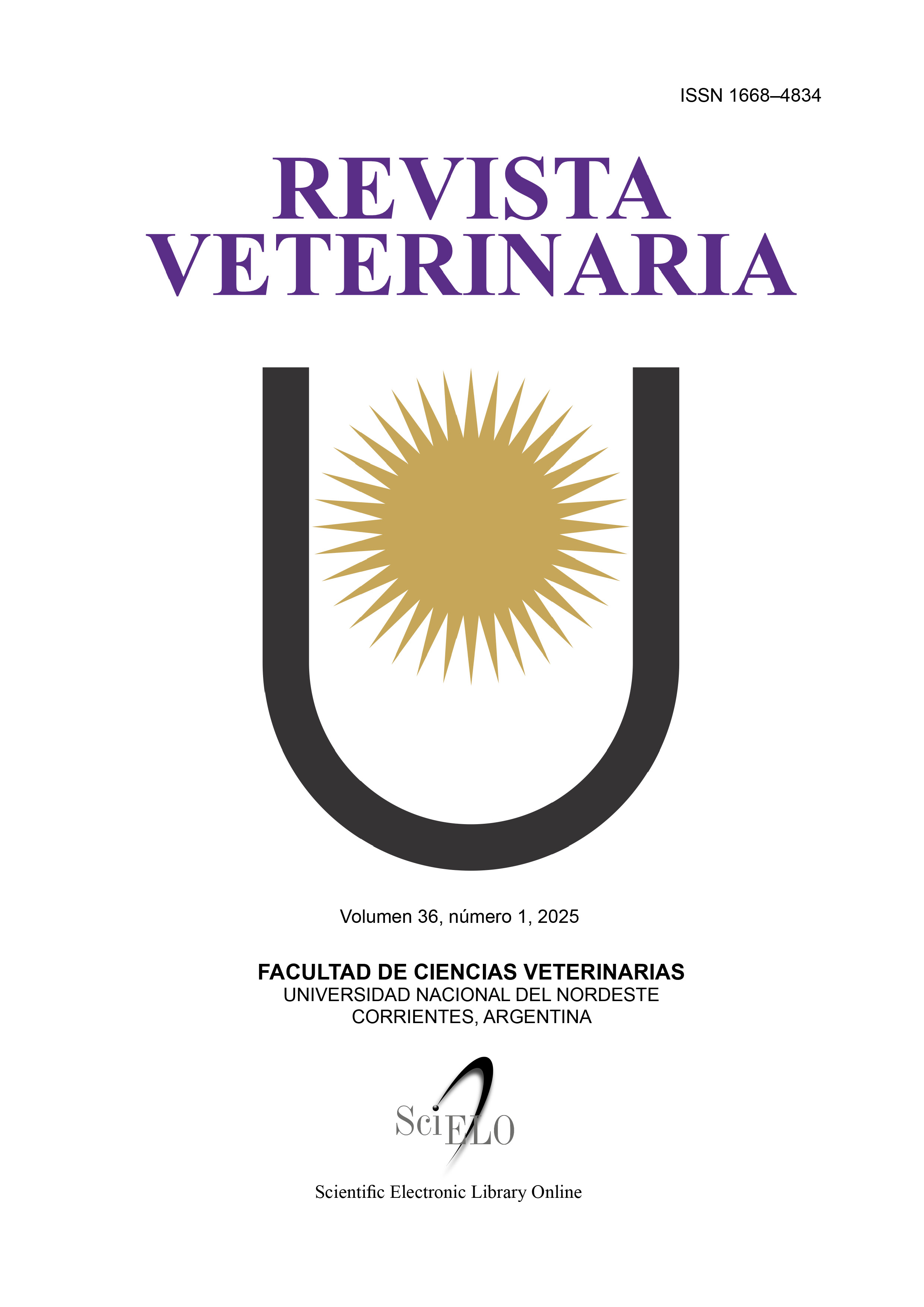Willingness to pay for the welfare of stray companion animals in Greece
DOI:
https://doi.org/10.30972/vet.3617986Palavras-chave:
Willingness to pay, stray companion animals, animal welfare, GreeceResumo
This article is a contingent valuation study that investigates the willingness to pay for the welfare of stray dogs and cats in Greece managed by municipalities. The main research question was whether individuals would be willing to pay and how much to support their municipalities in managing stray animals. An online survey collected responses from across Greece. After analyzing the data, certain sociodemographic characteristics of the respondents were identified. Most respondents are urban residents who are highly concerned about the issue of stray companion animals in the country. Using Stata 14, a contingent valuation model showed that 63% of participants (250 individuals) are willing to contribute financially. Key factors influencing this willingness include the respondents’ age, donation history, and consideration of adopting an animal in the future. The average amount participants are willing to pay is €9.18.
Downloads
Referências
Bekkers R, Wiepking P. A literature review of empirical studies on philanthropy: Eight mechanisms that drive charitable giving. Nonprofit Volunt. Sect. Q. 2011; 40(5): 924-973.
Bennett RM. People’s willingness to pay for farm animal welfare. Anim Welfare. 1996; 5(1): 3-11.
Bousfield B, Brown R. Animal welfare. Vet Bull. 2010; 1(4): 1-12.
Carson RT, Flores NE, Meade N.F. Contingent valuation: Controversies and evidence. Environmental and Resource Economics. 2003; 24(2): 1-48.
Clark B, Stewart GB, Panzone LA, Kyriazakis I, Frewer LJ. Citizens, consumers and farm animal welfare: A meta-analysis of willingness-to-pay studies. Food Policy. 2017; 68: 112-127.
Diavgeia. Transparency Program: Diavgeia. 2010. Available at: https://diavgeia.gov.gr/ [Accessed 17 Nov. 2024].
Eteron Institute. The Transparency Program and its Role in Public Administration and Politics in Greece. 2022. Available at: https://eteron.org/en/the-transparency-program/
Faunalytics. Giving to Animals: New Data on Who and How. Faunalytics. 2018. Retrieved from https://faunalytics.org/giving-to-animals-new-data-who-how
Faunalytics. The People Who Support Animal Causes: Descriptive Results. 2021. Available at: https://faunalytics.org/people-who-support-animal-causes-descriptive-results/
Filippas G, Stelios S, Theologou K. “Animal Rights in Greece: Legislation and Perceptions”. European Journal of Theoretical and Applied Sciences, EJTAS, 2024; 2(3): 976-987.
Friedmann E, Son H. The human–companion animal bond: how humans benefit. Vet Clin North Am Small Anim Pract. 2009; 39(2): 293-326.
Greece, European Union [Internet]. European Union. Available from: https://european-union.europa.eu/principles-countries-history/eu-countries/greece_en.
Greek Reporter. Greece Approves New Pet Law: “No Animal Abandoned or Abused”. GreekReporter.com. 2021. Available at: https://greekreporter.com/2021/09/16/greece-new-pet-law/ [Accessed 17 Nov. 2024].
Habibov N, Cheung A, Auchynnikava A. Does social trust increase willingness to pay taxes to improve public healthcare? Cross-sectional cross-country instrumental variable analysis. Soc Sci Med. 2017; 189: 25-34.
Hellenic Statistical Authority (ELSTAT). Population and Housing Census: Resident Population Results. 2021. Retrieved from https://www.statistics.gr/en/2021-census-res-pop-results.
Hellenic Statistical Authority (ELSTAT). Use of Information and Communication Technologies by Households and Individuals. 2019. Available at: https://www.statistics.gr/en/infographic-ecommerce-2019 [Accessed 16 Nov. 2024].
Jones IM. How charities can engage younger generations [Internet]. Charity Digital; 2024 [cited 2024 Jul 19]. Available from: https://charitydigital.org.uk/topics/topics/how-charities-can-engage-younger-generations-10297.
Kede. Petsas: Major program for the sterilization of stray companion animals. KEDE.gr. 2021. Available at: https://kede.gr/st-petsas-mega-programma-steiroseon-gia-ta-adespota-zoa-syntrofias/ [Accessed 17 Nov. 2024].
Kelfve S, Kivi M, Johansson B, Lindwall M. Going web or staying paper? The use of web-surveys among older people. BMC Med Res Methodol. 2020; 20: 1-12.
Lescun C. Cats and dogs: a community concern? Results of a survey on companion animals. Dept. of Agriculture and Rural Affairs. 1990; 72 p.
Lopez-Feldman A. Introduction to contingent valuation using Stata. 2012.
Loubière S, Taylor O, Tinland A, Vargas-Moniz M, O’shaughnessy B, Bokszczanin A, Hakan Kallmen, Roberto Bernad, Judith Wolf, Massimo Santinello, Anderson Loundou, Jose Ornelas, Pascal Auquier Europeans’ willingness to pay for ending homelessness: a contingent valuation study. Soc Sci Med. 2020; 247: 112802.
McClellan K. Becoming Animal People. Anthropological Quarterly, AQ. 2019; 92(3): 787-816.
McDowall S, Hazel SJ, Chittleborough C, Hamilton-Bruce A, Stuckey R, Howell TJ. The impact of the social determinants of human health on companion animal welfare. Animals. 2023; 13(6): 1113.
Mesch DJ, Brown MS, Moore ZI, Hayat AD. Gender differences in charitable giving. Int. J. Nonprofit Volunt. Sect. Mark. 2011; 16(4): 342-355.
Mitchell RC, Carson RT. Using Surveys to Value Public Goods: The Contingent Valuation Method. Resources for the Future. 1989.
National Philanthropic Trust UK (NPT UK). UK Charitable Giving Statistics. 2021. Available at: https://www.nptuk.org/philanthropic-resources/uk-charitable-giving-statistics/ [Accessed 16 Nov. 2024].
Newsbeast. Greece is filled with stray dogs. Η Ελλαδα έχει γεμίσει με αδέσποτα σκυλιά [Internet]. Available from: https://www.newsbeast.gr/environment/arthro/9256928/giati-i-ellada-echei-gemisei-me-adespota-skylia-70-000-zoun-egkataleleimmena-sta-vouna-kai-3-ekat-se-oli-ti-chora.
Papavasili T, Kontogeorgos A, Mayrommati A, Chatzitheodoridis F, Sossidou E. Defining priority issues for managing stray dog populations: The case of Greece. J Hellenic Vet Med Soc. 2023; 74(1): 5305-5314.
Piper G, Schnepf SV. Gender Differences in Charitable Giving in Great Britain. Voluntas: International Journal of Voluntary and Nonprofit Organizations. 2008; 19(2): 103-124.
RSPCA. Animal Kindness Index: Key Findings. 2022. Available at: https://www.rspca.org.uk/whatwedo/latest/kindnessindex2022/report [Accessed 16 Nov. 2024].
Sandoval-Cervantes I. Semi-Stray Dogs and Graduated Humanness: The Political Encounters of Dogs and Humans in Mexico. In: Pręgowski, M. (eds) Companion Animals in Everyday Life. Palgrave Macmillan, New York. 2016.
Schulz-Sandhof S, Schupp J. Income and Charitable Giving: Insights from Germany. DIW Weekly Report, DIW Berlin 2022; 12(45): 1-10. Available at: https://ideas.repec.org/a/diw/diwdwr/dwr12-45-1.html [Accessed 16 Nov. 2024]
Serpell JA. How happy is your pet? The problem of subjectivity in the assessment of companion animal welfare. Anim Welfare. 2019; 28(1): 57-66.
Siettou C. The UK public’s perceptions on the issue of the dog overpopulation problem and people’s willingness to pay (WTP) for a humane stray dog management. 2015.
Siettou C, Fraser I, Fraser R. A choice experiment analysis of the management of the stray dog population in the UK. 2013.
Smith WG. Does gender influence online survey participation? A record-linkage analysis of university faculty online survey response behavior. Online submission. 2008.
Sneddon JN, Evers U, Lee JA. Giving to animal charities: A nine-country study. Anthrozoös. 2021; 34(6): 823-838.
Stathakis D, Baltas P. The Greek model of urbanization. Land Use Policy. 2024; 140: 107113.
Taylor N, Signal TD. Willingness to pay: Australian consumers and “on the farm” welfare. J Appl Anim Welfare Sci. 2009; 12(4): 345-59.
Thornton L, Batterham PJ, Fassnacht DB, Kay-Lambkin F, Calear AL, Hunter S. Recruiting for health, medical, or psychosocial research using Facebook: Systematic review. Internet Interv. 2016; 4: 72-81.
Toronto Humane Society. Understanding the root causes of stray pets: a complex challenge [Internet]. 2024. Available from: https://www.torontohumanesociety.com/understanding-the-root-causes-of-stray-pets-a-complex-challenge/.
Vander Naald B, Cameron TA. Willingness to pay for other species’ well-being. Ecol Econ. 2011; 70(7): 1325-35.
Vaughan WJ, Darling AH. The optimal sample size for contingent valuation surveys: applications to project analysis. 2000. 41 p.
Verga M, Michelazzi M. Companion animal welfare and possible implications on the human–pet relationship. Ital J Anim Sci. 2009; 8(sup1): 231-40.
Zhao Y, Wu S. Willingness to pay: animal welfare and related influencing factors in China. J Appl Anim Welfare Sci. 2011; 14(2): 150-61.
Downloads
Publicado
Como Citar
Edição
Seção
Licença
Copyright (c) 2025 A. S. Siettou, E. Theodoropoulou, V. Karagianni, E. Sossidou

Este trabalho está licenciado sob uma licença Creative Commons Attribution-NonCommercial 4.0 International License.
Política de acceso abierto
Esta revista proporciona un acceso abierto inmediato a su contenido, basado en el principio de que ofrecer al público un acceso libre a las investigaciones ayuda a un mayor intercambio global de conocimiento. La publicación por parte de terceros será autorizada por Revista Veterinaria toda vez que se la reconozca debidamente y en forma explícita como lugar de publicación del original.
Esta obra está bajo una licencia de Creative Commons Reconocimiento-NoComercial 4.0 Internacional (CC BY-NC 4.0)










.jpg)
.jpg)



